Traveling can be one of life’s greatest joys—exploring new destinations, meeting diverse people, and experiencing different cultures. Yet, it also comes with its fair share of stress: long flights, cramped spaces, hectic schedules, and the constant hustle of navigating unfamiliar environments. In the midst of all this, finding a moment of calm can seem nearly impossible. That’s where yoga comes in. A few mindful minutes on the go can transform your travel experience, helping you stay grounded, relieve stress, and maintain balance no matter where your journey takes you.
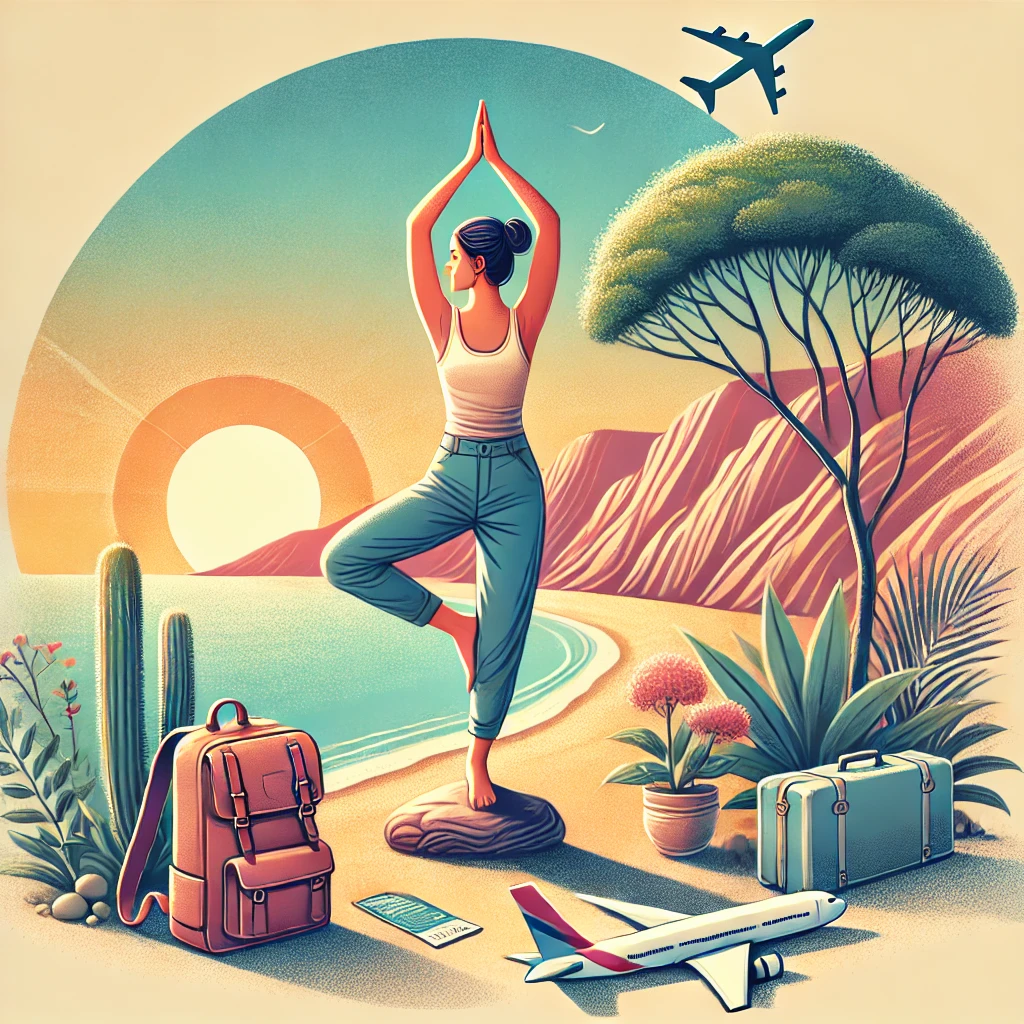
In this comprehensive guide, we explore how a 5-minute yoga routine tailored for travelers can become your secret weapon for staying centered and resilient during your adventures. With detailed explanations, step-by-step instructions, and tips for adapting your practice to any environment—from airplanes and train stations to hotel rooms and busy city streets—you’ll learn how to integrate mindful movement into your travel routine, ensuring that you arrive at your destination feeling refreshed and revitalized.
The Challenges of Traveling and the Need for Mindfulness
Traveling is exhilarating, but it can also be physically and mentally draining. Here are some common challenges that travelers face and how they impact your overall well-being:
1. Physical Fatigue and Stiffness
Long periods of sitting in cramped spaces, whether on a plane, train, or bus, can cause muscle stiffness and discomfort. The body’s natural circulation slows down, and tension builds up, especially in the lower back, neck, and shoulders.
2. Mental Overload and Stress
Navigating airports, dealing with travel delays, and adjusting to new time zones can lead to mental fatigue and stress. The constant rush and sensory overload make it hard to slow down and relax, often leading to anxiety and irritability.
3. Disrupted Routines
When traveling, your usual routines—like regular exercise, healthy meals, and sufficient sleep—are often disrupted. This disruption can affect your physical health, mood, and overall energy levels.
4. Environmental and Sensory Challenges
New environments come with unfamiliar sounds, smells, and visual stimuli that can be both exciting and overwhelming. Adjusting to these changes requires mental adaptability and a calm, centered mind.
How Yoga Can Transform Your Travel Experience
Yoga is much more than a form of physical exercise—it’s a holistic practice that integrates mind, body, and spirit. For travelers, yoga offers a powerful means to counterbalance the stresses of the journey and restore a sense of equilibrium. Here’s how a short yoga routine can make a difference:
1. Quick Stress Relief
A well-designed 5-minute routine can rapidly lower stress levels by activating the parasympathetic nervous system. Deep breathing, gentle stretching, and mindful movements help reduce cortisol levels and calm the mind.
2. Increased Energy and Alertness
By promoting better blood circulation and stimulating key muscle groups, yoga can help alleviate the fatigue associated with long periods of inactivity. This means you can shake off the sluggishness of travel and feel more energized and alert.
3. Enhanced Flexibility and Reduced Stiffness
Travel-related inactivity can lead to muscle tightness and stiffness. Incorporating dynamic stretches and mobility exercises into your routine can counteract these effects, keeping your muscles supple and reducing discomfort.
4. Mental Clarity and Focus
The practice of synchronizing breath with movement fosters mindfulness and concentration. This mental clarity is essential for navigating the complexities of travel, from planning itineraries to making quick decisions in unfamiliar surroundings.
5. Adaptability in Any Environment
Yoga doesn’t require a lot of space or specialized equipment. With a little creativity, you can practice anywhere—whether you’re in a small hotel room, a busy airport lounge, or even a park during a layover.
The 5-Minute Yoga Routine for Travelers
Below is a detailed 5-minute yoga routine designed specifically for travelers. This sequence is meant to be a quick, effective way to release tension, boost energy, and restore mental clarity. Each pose is explained in detail, with modifications for different environments and comfort levels.
Minute 1: Seated Breath Awareness

Purpose:
Establish a foundation of calm by focusing on your breath.
Instructions:
- Sit comfortably on a chair or on the floor with your back straight. If you’re in a confined space like an airport, sit on the edge of your seat.
- Place your hands on your knees or in your lap.
- Close your eyes, or soften your gaze by looking slightly downward.
- Inhale deeply through your nose, expanding your abdomen. Count slowly to four as you breathe in.
- Hold the breath for a count of two.
- Exhale slowly through your mouth for a count of six, feeling any tension leave your body.
- Repeat this breathing cycle for one full minute, allowing your mind to settle and your body to relax.
Benefits:
- Activates the body’s relaxation response.
- Lowers heart rate and reduces stress.
- Prepares the mind for mindful movement.
Minute 2: Seated Neck and Shoulder Stretches
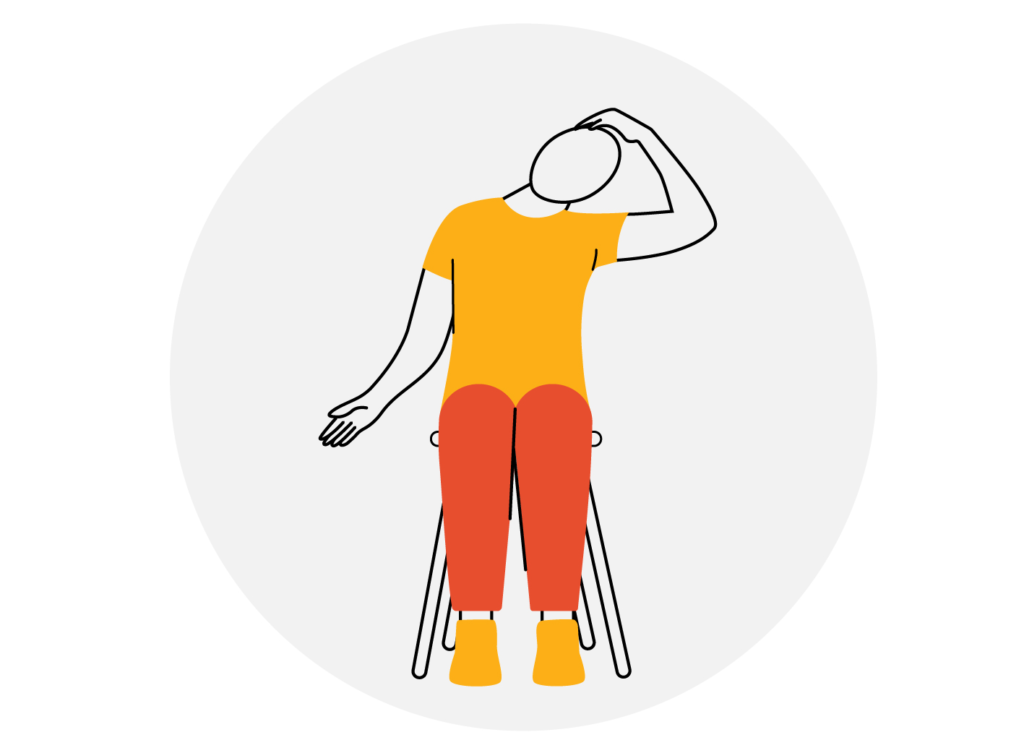
Purpose:
Release tension in the neck and shoulders—common areas of stiffness after long flights or train rides.
Instructions:
- Remain seated in your comfortable position.
- Slowly tilt your head to the right, bringing your ear toward your shoulder. Hold for 10 seconds.
- Return to center and then tilt your head to the left. Hold for another 10 seconds.
- Next, lift your shoulders up toward your ears as you inhale deeply.
- Exhale, and release your shoulders down in a controlled, smooth motion.
- Repeat the shoulder rolls by moving your shoulders forward in a circle, then backward.
- Perform these movements for one minute, focusing on the sensation of release with each motion.
Benefits:
- Reduces muscle tension and stiffness.
- Increases blood flow to the neck and shoulder region.
- Helps relieve the strain caused by prolonged sitting.
Minute 3: Standing Forward Fold (Uttanasana) – Modified
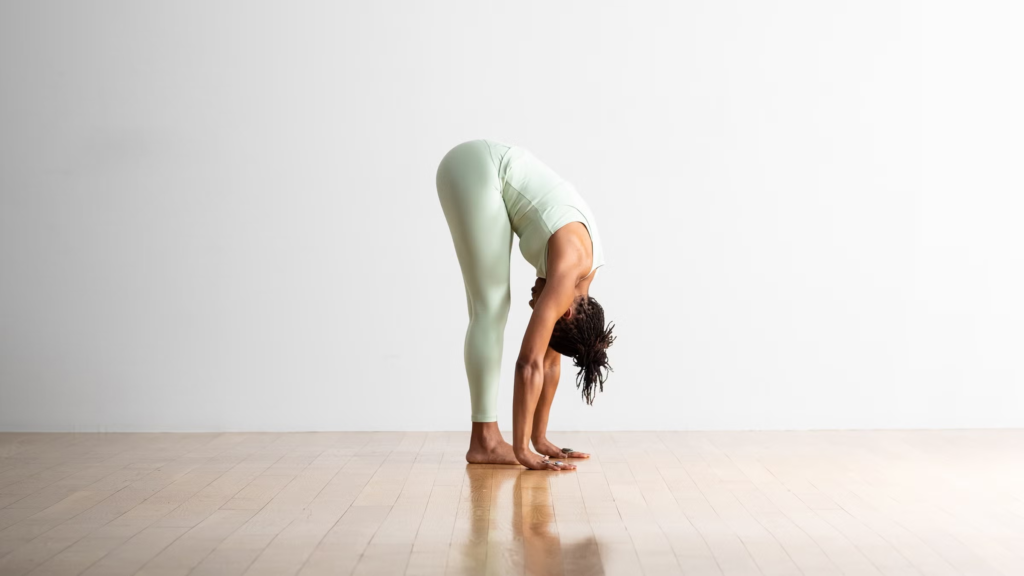
Purpose:
Release tension in the back and legs while promoting a sense of calm.
Instructions:
- Stand up if space permits. If not, you can perform a seated forward fold on the edge of your chair.
- If standing, stand with your feet hip-width apart. Inhale deeply, then exhale as you hinge forward at the hips. Let your upper body hang loosely over your legs.
- You can either let your hands dangle or gently hold opposite elbows.
- If seated, sit on the edge of your chair with your feet flat on the floor, then hinge forward from your hips, letting your torso drape over your legs.
- Hold this position for one minute, breathing deeply and allowing gravity to gently stretch your back and legs.
- With each exhale, imagine releasing any accumulated stress or fatigue.
Benefits:
- Stretches the hamstrings, lower back, and shoulders.
- Enhances relaxation and reduces mental stress.
- Promotes a sense of surrender and calm.
Minute 4: Standing Balance (Tree Pose Variation)

Purpose:
Improve balance and focus, crucial for re-centering after long journeys.
Instructions:
- Stand tall with your feet hip-width apart.
- Shift your weight onto your left foot.
- Lift your right foot and place it on your left calf or inner thigh—avoid the knee for safety.
- Bring your hands together in prayer position at your chest, or extend them overhead for an added challenge.
- Focus on a fixed point in front of you to help maintain your balance.
- Hold for 30 seconds, then switch sides and hold for another 30 seconds.
Benefits:
- Enhances balance and stability.
- Strengthens leg muscles and improves coordination.
- Centers the mind and improves concentration.
Minute 5: Savasana (Corpse Pose) – Quick Restorative

Purpose:
Conclude your routine with a moment of deep relaxation to integrate the benefits of your practice.
Instructions:
- Lie down on your back if space allows, or sit comfortably if lying down is not feasible.
- If lying down, use a travel pillow for support. If seated, simply close your eyes and relax.
- Allow your arms and legs to fall naturally at your sides.
- Focus on your breath—inhale slowly and deeply, then exhale completely.
- Let go of any remaining tension and allow your body to sink into a state of relaxation.
- Stay in this restorative pose for one minute, absorbing the calming effects of your practice.
Benefits:
- Promotes deep relaxation and mental clarity.
- Helps the body transition from an active state to a state of rest.
- Enhances overall well-being and prepares you for a peaceful journey ahead.
Adapting Your Practice for Various Travel Environments
One of the greatest advantages of a short yoga routine is its adaptability. Whether you’re in a cramped airplane seat, a busy airport terminal, or a small hotel room, these poses can be modified to suit your space.
In-Flight Yoga
- Seated Breath Awareness: Perform your breathing exercises in your seat to reduce stress and fatigue.
- Neck and Shoulder Stretches: While seated, gently perform your neck tilts and shoulder rolls.
- Modified Forward Fold: If standing isn’t possible, do a seated forward fold by leaning forward on the edge of your seat.
- Seated Balance: While it may be challenging to stand, you can still practice mental balance by focusing on your breath and visualizing stability.
- Seated Savasana: Simply close your eyes and relax, letting your body rest against the seatback.
At the Airport
- Find a Quiet Corner: Many airports have quiet lounges or less crowded corners where you can practice.
- Use a Yoga Mat or Towel: If you’re concerned about hygiene, bring a lightweight, foldable mat or a large towel.
- Incorporate Movement: Use the space to stand up and perform your standing poses like the modified forward fold and tree pose.
- Take a Walk: Combine your yoga routine with a short walk through the terminal to boost circulation and energy levels.
In a Hotel Room
- Clear a Small Space: Rearrange your belongings to create a dedicated area for your practice.
- Practice with Props: Utilize a hotel pillow or blanket as a substitute for yoga props.
- Combine with a Mini-Meditation: After your routine, spend an extra few minutes meditating or journaling to reflect on your day.
- Stay Consistent: Make it a habit to practice your 5-minute routine each day, ideally at the same time, to establish a calming travel ritual.
Additional Tips for a Grounded Travel Experience
In addition to your 5-minute yoga routine, consider these tips to enhance your travel experience and maintain your sense of balance and well-being:
1. Hydration is Key
Traveling can be dehydrating, especially on long flights. Always carry a reusable water bottle and drink water frequently. Staying hydrated helps maintain energy levels and supports overall health.
2. Mindful Eating
While traveling, it’s easy to succumb to unhealthy food choices. Try to opt for nutritious snacks like fruits, nuts, or yogurt. Eating mindfully—savoring each bite and being aware of your body’s hunger cues—can help you avoid overindulgence and maintain steady energy.
3. Plan for Rest
Travel schedules can be hectic, so schedule breaks and downtime. Even if it’s just 5–10 minutes of solitude with your yoga routine, these moments of pause can help reset your mind and body for the next leg of your journey.
4. Use Technology Wisely
There are many apps available that offer guided meditation and yoga routines tailored for travelers. Use these tools to enhance your practice, but also be mindful of screen time before sleep, as it can interfere with your rest.
5. Prioritize Sleep
Good quality sleep is essential for travel recovery. If you’re experiencing jet lag or disrupted sleep patterns, try incorporating a short yoga routine before bed to help signal to your body that it’s time to rest.
6. Set a Positive Intention
Before you begin your day of travel or embark on a new leg of your journey, take a moment to set an intention. This could be as simple as “I will remain calm and centered today” or “I am open to new experiences and ready to embrace the journey.” This practice can help ground your mind and provide a positive framework for your day.
7. Stay Flexible
Travel plans can change unexpectedly. Being adaptable—both in your travel itinerary and your yoga practice—can help reduce stress. Embrace the uncertainty with a flexible mindset, knowing that every challenge is an opportunity to practice resilience and mindfulness.
The Science Behind Yoga and Its Impact on Travelers
Research has shown that even short bouts of yoga and mindful breathing can have significant effects on reducing stress and improving overall well-being. Here are some scientific insights into how yoga benefits travelers:
1. Reducing Cortisol Levels
Cortisol, the body’s primary stress hormone, can remain elevated during stressful travel. Yoga’s slow, mindful movements and deep breathing techniques have been shown to lower cortisol levels, which helps reduce anxiety and promote relaxation.
2. Enhancing Blood Circulation
Movement, even in small doses, improves blood circulation. Increased circulation means that oxygen and nutrients are delivered more efficiently throughout the body, combating the effects of prolonged sitting and inactivity.
3. Boosting Mental Clarity
The mindful aspects of yoga train the brain to focus on the present moment. This increased mental clarity can help you navigate complex travel situations with ease and make decisions more effectively.
4. Promoting a Mind-Body Connection
Yoga encourages you to become more aware of your body’s sensations, thoughts, and emotions. This heightened self-awareness can lead to better stress management and an overall improved state of well-being—both essential for a fulfilling travel experience.
Real-Life Stories: How Yoga Transformed My Travels
Many travelers have experienced the transformative power of a simple yoga routine on the go. Consider the story of Alex, a frequent flyer who used to arrive at meetings feeling exhausted and stressed. After incorporating a daily 5-minute yoga routine into his travel schedule, Alex noticed significant improvements in his energy levels, mental clarity, and overall mood. He credits the practice with helping him stay calm during delays, navigate hectic airports, and even sleep better on long flights.
Similarly, Maria, an avid backpacker, found that a short yoga practice each morning set a positive tone for her adventures. Whether she was hiking through remote trails or exploring bustling cities, Maria’s 5-minute routine kept her grounded and connected to the present moment, allowing her to fully enjoy every experience without being overwhelmed by the stress of travel.
Integrating Yoga Into Your Travel Lifestyle
The key to success is consistency. Even a brief 5-minute routine, when practiced regularly, can yield substantial benefits. Here are some strategies to help you integrate yoga into your travel lifestyle:
Create a Portable Practice Kit
- Compact Essentials: Pack a lightweight travel yoga mat or a foldable towel, and include a small set of props such as a travel strap or a couple of yoga blocks.
- Apps and Guides: Download a few yoga or meditation apps on your phone to guide you through routines when you have limited space or time.
Schedule Your Practice
- Daily Ritual: Dedicate a specific time each day for your yoga routine, whether it’s first thing in the morning, during a layover, or before bed.
- Set Reminders: Use your phone or planner to remind you to take these few minutes for yourself, reinforcing the habit over time.
Adapt to Your Environment
- Be Creative: If you’re in a cramped airplane seat, modify poses to fit your space. If you’re in a hotel room, clear a small area to practice.
- Utilize Quiet Spaces: Look for quiet corners in airports, train stations, or even parks where you can practice without interruptions.
Listen to Your Body
- Adjust as Needed: Your energy levels may vary from day to day. Some days, you might feel like stretching longer; other days, your 5-minute routine might be all you need.
- Rest When Required: Don’t push yourself too hard. The goal is to recharge and refresh, not to exhaust yourself further.
Frequently Asked Questions (FAQs)
1. Can a 5-minute yoga routine really make a difference during travel?
Yes. Even short sessions of mindful movement can significantly reduce stress, improve circulation, and enhance mental clarity. The cumulative effect of regular practice can help you manage travel-related fatigue and anxiety.
2. What if I don’t have space to lie down?
The routine is designed to be adaptable. You can perform seated or standing variations of the poses if lying down is not possible. The key is to focus on deep breathing and gentle movement.
3. How can I incorporate yoga into a busy travel schedule?
Plan ahead. Dedicate a few minutes in the morning or during layovers for your routine. Consistency is more important than the duration of each session.
4. Do I need any special equipment for this routine?
Not at all. A small travel mat or even a folded towel is sufficient. Optional props like a travel strap or blocks can enhance your practice but are not necessary.
5. Will this routine help me sleep better during travel?
Yes. By calming your mind and relaxing your body, a short yoga routine can help regulate your nervous system, making it easier to transition to sleep—especially in unfamiliar environments.
6. Can I modify these poses if I have injuries or limitations?
Absolutely. Yoga is highly adaptable. Listen to your body and modify poses to suit your needs. If necessary, consult a yoga instructor or a physical therapist for personalized modifications.
7. How often should I practice this routine while traveling?
For best results, try to practice daily—even if it’s just for 5 minutes. Consistency will help you maintain balance and energy throughout your journey.
Conclusion: Embrace the Journey with Mindful Movement
Travel is an adventure, filled with both excitement and challenges. Amid the whirlwind of new experiences, a brief yoga routine can be your anchor—helping you stay grounded, calm, and connected to yourself. By dedicating just 5 minutes a day to mindful movement, you can reduce travel stress, alleviate physical tension, and foster mental clarity, ensuring that every journey is not only a trip to a new destination but also a journey inward.
As you travel the world, let your yoga practice be a constant companion—a reminder that no matter where you go, you can always return to a state of balance and peace. Embrace the freedom of movement, the power of deep breathing, and the serenity that comes from being fully present. With every mindful breath and every gentle stretch, you build a reservoir of resilience and inner strength that will carry you through even the most hectic travel days.
So, whether you’re hopping on a plane, navigating a busy airport, or settling into a cozy hotel room, take a few moments for yourself. Step onto your mat, focus on your breath, and let the transformative power of yoga guide you to a place of calm amidst the chaos of travel. Your journey to staying grounded on the go begins with a single, mindful step—one breath, one pose, and one moment of inner peace at a time.

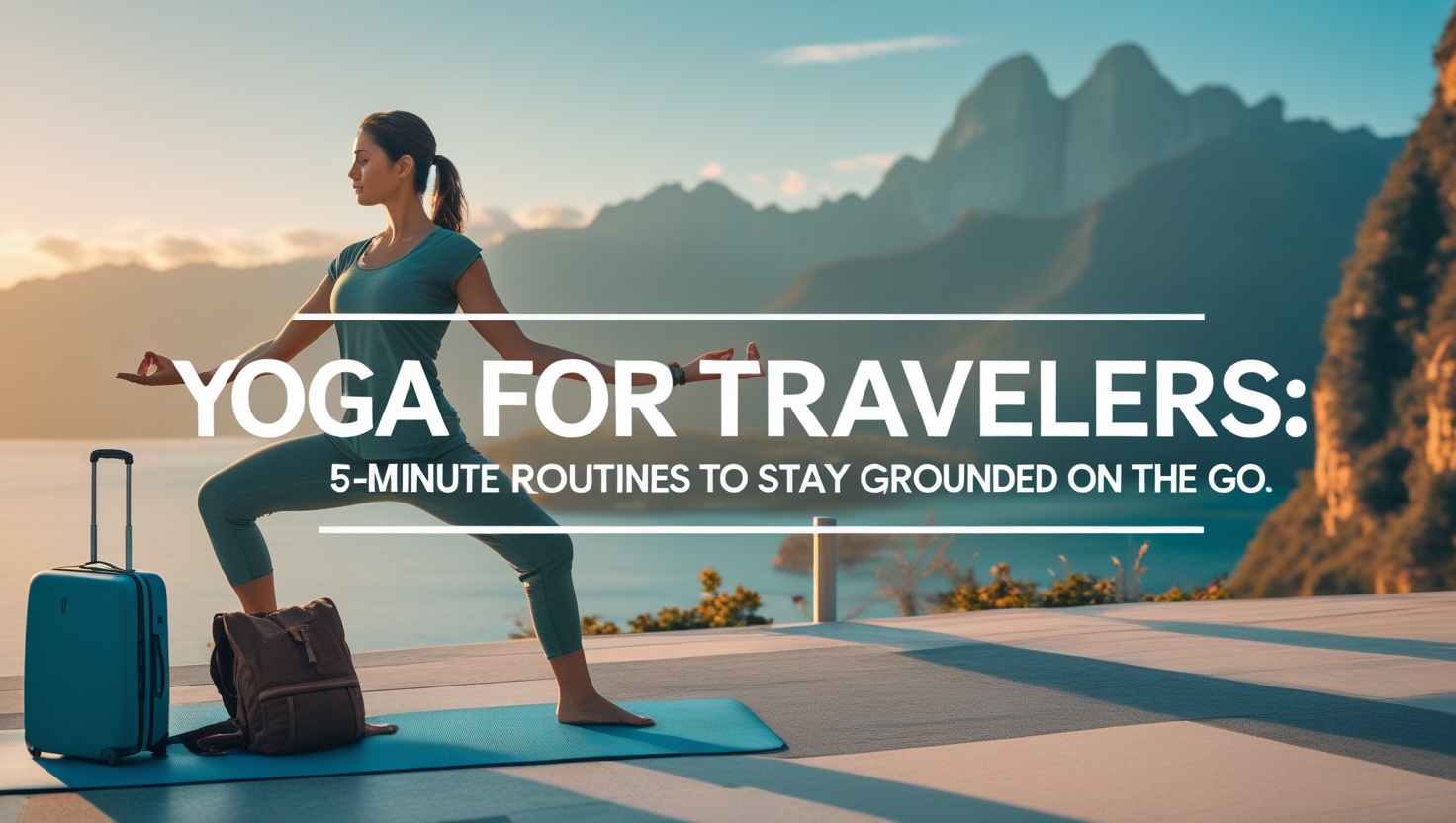



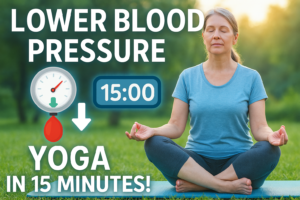









Add comment